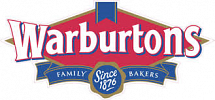Case Studies » Warburtons - Wednesbury

The challenge
A visit was made to the Warburton’s Bakery site at Wednesbury, on 3rd March 2016 to consider compliance with the Dangerous Substances and Explosive Atmospheres Regulations 2002 (DSEAR). The site’s core business is making high quality loaves for the retail market. They are the manufacturer and supplier to some of the leading food retailers in the food sector.
The site has substantial volumes of fine organic combustible powder, this powdered material may form explosive dust-air mixtures. Additionally there were a number of highly flammable compressed gases and a small amount of flammable liquids.
The solution provided
Based upon observations at time of survey, site operations routinely involve hazardous substances as defined under DSEAR. A release of fine powder into a cloud may become ignited (primary detonation), and if there are other dust deposits, the effect of the primary detonation can cause agitation and formation of a second (larger) dust cloud, which may also become ignited, leading to a more severe explosion and fire.
Dusts have a large surface area compared to their mass and since burning will only occur at the surface of a solid or liquid where it reacts with oxygen, this causes dusts to be much more flammable than bulk materials. Increased surface area can be as much as 200 times that of solid material and allows the dust to burn much faster - and catch fire with much less energy as there is no heat loss via conduction to the bulk solid.
When a mixture of fuel and air is ignited, especially in a confined space or vessel, a significant increase in pressure is created, often more than sufficient to demolish the structure.
A full review of operations across the site was completed by our consultant and detailed feedback was provided in the report issued to the business. For Warburton’s Bakery, the dust explosion mechanism explained in the report was most relevant in determining Hazardous Areas due to combustible wheat flour powder/dust. The regulatory guidance followed was as per BS EN 60079-10-2: Explosive Atmospheres – classification of areas – combustible dust atmospheres. Extensive Hazardous Area Classification was applied from the survey and to support this a large number of supporting diagrams were developed and issued with the report.

